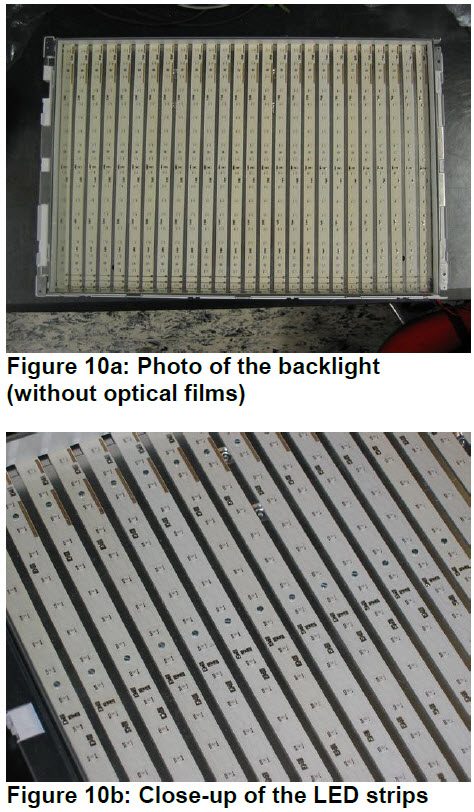I have spent most of September at IFA and IBC, or writing about them. The big topic has, of course, been UltraHD in its broadest sense, especially the “next step” for UltraHD, which is high dynamic range (HDR), along with wide colour gamut (WCG). I’m more than ever convinced that the arrival of really high quality content with HDR will boost the TV market, although it may disappoint the early adoptors that bought the Phase 1 UltraHD sets which have support for higher spatial resolution, but not HDR.

HDR has taken a long time to arrive. I first saw a demo of an HDR display at CES in 2006 (by the company Brightside, which Dolby bought) and in 2008, Dolby set out its concept for Dolby Vision at our DisplayForum conference. It has taken a long time to get the technology adopted!
As we heard from the UltraHD Alliance at IBC, CES should see some real Hollywood content released with new UltraHD Blu-ray players. Dolby is continuing to gather support for its Dolby Vision system, which is intended to help content creators to take advantage of the HDR and WCG technology that is now possible with the latest displays. It also helps to ensure that the final result for the consumer is as close as possible to the intent of the content creator (within the limits of the display being used). Just before IBC, Dolby added Sony Pictures as a supporter for its system, with Sony planning to use it for its UltraHD Blu-ray releases.
Dolby has good support for Dolby Vision, with Sony, Paramount, Universal and Lionsgate as well as 20th Century Fox and Disney/Pixar supporting the format for cinema release.
 Game content should be able to exploit the potential of HDRMy attention was caught though, by a comment in a Dolby White paper (downloadable from here) that the Dolby Vision technology was being supported by a number of games engines. There are few users that care more about the displays and performance of their PCs than gamers. We noticed at IBC that Intel is a member of the UltraHD Alliance, which is trying to set minimum performance requirements for systems and displays in terms of contrast, brightness and colour. (Dolby, of course, already has relationships with games developers that support the firm’s audio technologies). It’s not unreasonable to assume that Intel will continue with the “battle for eyeballs” and will want PC vendors to match the visual quality of TVs.
Game content should be able to exploit the potential of HDRMy attention was caught though, by a comment in a Dolby White paper (downloadable from here) that the Dolby Vision technology was being supported by a number of games engines. There are few users that care more about the displays and performance of their PCs than gamers. We noticed at IBC that Intel is a member of the UltraHD Alliance, which is trying to set minimum performance requirements for systems and displays in terms of contrast, brightness and colour. (Dolby, of course, already has relationships with games developers that support the firm’s audio technologies). It’s not unreasonable to assume that Intel will continue with the “battle for eyeballs” and will want PC vendors to match the visual quality of TVs.
Games often have a limited range of brightness overall, with a lot of detail in the shadows and if you don’t have good levels of accurate grey scale, the low levels can get “crushed”, and detail lost. I’ve been aware of this for a good number of years and in the late ’90s, during a lunch at CeBIT, I suggested to Bill Hilliard, then of Sonnetech, that a way of managing and optimising the gamma of monitors might really help gamers. Bill took the idea, talked Microsoft into putting the feature into DirectX 6 and sold the technology as “3Deep”. Around the turn of the century, it proved to be quite popular although in 2002, Sonnetech, by then called E-Color, was sold along with the technology and we saw no more of it.
Improving the colour performance with Dolby Vision, especially if combined with a wide colour gamut, perhaps based on quantum dots, might really help gamers to get a better experience. Certainly the kind of bright specular highlights in explosions and other dramatic events should really improve the gaming experience and might even improve gamer performance. Companies such as BenQ already have options to modify the EOTF/gamma of their gaming monitors to help gamers although we have seen no declarations of support for Dolby Vision in the PC space.
To really get the best out of Dolby Vision, you need quite a lot of peak brightness, unless you go to OLED or another technology that has really deep blacks. Game players may be happy to arrange relatively low levels of ambient lighting, which might mean that you could get away with a lower peak brightness of, say, 1,000 cd/m2 rather than the 2,000 or so that Dolby has shown.
 Osram Did some Tests on Direct Lit Monitors (Image:source Osram)Dolby Vision, and most HDR, when used on an LCD needs very variable backlight technology – which was a key part of the technology that the firm bought from Brightside. However, few, if any, desktop monitors use direct-addressed backlights – they use edge backlights. That could be a real challenge in developing the technology. Technically, it may be quite difficult to develop highly modulated backlights with enough zones that are small enough to avoid “halo” and other side effects that sometimes happen when you have a modulated backlight.
Osram Did some Tests on Direct Lit Monitors (Image:source Osram)Dolby Vision, and most HDR, when used on an LCD needs very variable backlight technology – which was a key part of the technology that the firm bought from Brightside. However, few, if any, desktop monitors use direct-addressed backlights – they use edge backlights. That could be a real challenge in developing the technology. Technically, it may be quite difficult to develop highly modulated backlights with enough zones that are small enough to avoid “halo” and other side effects that sometimes happen when you have a modulated backlight.
Game players are obsessive about frame rates and speed and one of the advantages of HDR, compared to higher spatial resolution is that there may be less impact on frame rates. Having said that, Dolby Vision does require some processing in the set, so it will be important for monitors not to have too much of a latency delay when receiving the content.
The other factor is cost. The monitor market is fiercely competitive and Dolby’s business model is not to take income from content providers or the delivery mechanisms, but from the set makers. There are few set businesses where the margins are as tight as monitors, so there may be a barrier there.
We’ll be watching this space closely over the next few months as we come towards CES.

